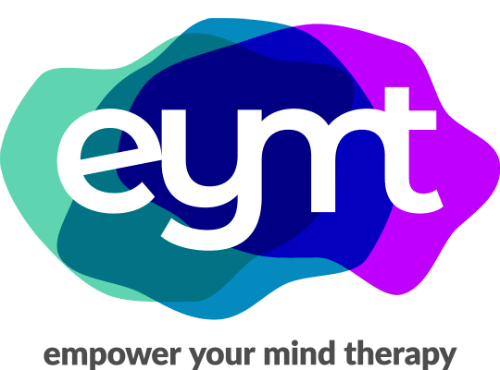This week we are talking all about using mindfulness therapy for anxiety by utilizing DBT skills.
But what is mindfulness, anyway?
Mindfulness is the practice of letting your mind be fully active in the present moment, rather than past or future events + anxieties. It is about staying fully present, aware of our surroundings so we can interact + engage with our environment rather than let our thoughts spiral out of control.
So how can I use mindfulness therapy for anxiety?
DBT uses mindfulness and meditation to help regulate emotions & behavior. As we’ve touched on before, both mindfulness and meditation are extremely useful tools to help combat and manage anxiety as they help us to focus our mind on the present moment, rather than run rampant with worry or regret for the past + future, or the need for control.
Sometimes anxiety can really be about a need to control what’s happening in our lives. As much as we might wish we were able to, we can’t control everything. Focusing on fears and hypotheticals takes us out of the present and limits how we interact with others. Learning to let go of this need for control is one of the goals of mindfulness in DBT.
Mindfulness is the practice of letting your mind be fully active in the present moment, rather than past or future events + anxieties. It is about staying fully present, aware of our surroundings so we can interact + engage with our environment rather than let our thoughts spiral out of control.
When we feel the need for control, we root ourselves firmly OUT of the present and our energy is spent mainly on fears and hypotheticals. This removes us from the present moment, and restricts us from living fully in the environment, situation and moment we actually exist in.
This need for control then exacerbates our anxiety. When we learn to release this compulsion we are able to better manage our anxiety, and alleviate panic at the thoughts of things that are out of our control (past choices, future occurrences, other people’s actions, etc.)
I want you to think about how anxiety takes you out of the present moment.
- Do you miss a lot of what is said in front of you because you can’t focus on what’s happening?
- Do you make mistakes on current projects because you’re worrying about future ones?
- Do you spend so much time focused on the situations that give you anxiety that you miss things that make you happy?
These are just some of the ways anxiety can take you out of the present moment. Spending so much time in a state of fear and worry is exhausting, and it can often leave you feeling stuck, lonely, or trapped.
When was the last time you actively tried to be fully present?
It’s pretty typical these days to constantly multitask. Whether at work or at home, we usually have more than one thing going on at once. Maybe you have the TV going in the background, or you always have your phone in your hand so you can mindlessly scroll as needed. When you take a step back and observe, describe, and participate in what’s going on, you can quiet the overwhelm in your mind. Actively focusing on the present helps drown out the other noise so you can appreciate the moment.
With the Mindfulness skills of DBT, you have a simple tool to bring yourself back to the present moment, anywhere. These skills can help you quiet those fears and judgments inside your mind so that you can free yourself from the limits of anxiety. How would your life look different if you made practicing Mindfulness a regular habit?
Write it down as a reminder. When you find your motivation wavering, read your motivation reminder and tap back into what is driving you to work on using mindfulness skills to help manage anxiety.
Mindfulness in DBT is broken down into two sets of skills: the WHAT skills and the HOW skills. The WHAT skills tell you what to do to be mindful. The HOW skills build on that, and tell you how to do the WHAT skills.
Here’s a refresher on using DBT skills and mindfulness therapy for anxiety:
There are three core skills involved in the WHAT skills of mindfulness. They are:
- OBSERVE: What is happening around you? What do you see, smell, hear, touch, taste, etc.?
- DESCRIBE: Put words to what you observe, without judgment or assumptions.
- PARTICIPATE: Give your attention & energy 100% to the situation you are in at the moment.
The HOW Skills also have three components. When you are working toward mindfulness remember to do so
- Nonjudgmentally
- One-Mindfully
- Effectively
Remember, the HOW skills simply tell us how to do the WHAT skills. So you just need to follow those guidelines (nonjudgmentally, one-mindfully, effectively) for every step of the WHAT skills. When you put these skills together, you will be on your way to mindfulness.
OBSERVE:
- Where is your attention? Focus it on the environment you are in, what you are doing, and the people you are with.
- Resist the urge to multitask: don’t scroll through your phone as you talk, give all of your focus to anyone you are with or to the task at hand.
- Try not to let your mind wander: if you find yourself thinking of what to say or do next, let the thought go and try to refocus. What is happening NOW? Stay in the present moment.
- Let go of judgments: when you notice judgmental thoughts come into your mind, don’t focus on them. Instead, notice they are there and release them. Make room in your mind for what is happening in the present, not judgments or emotional reactions.
- Let go of the need to be right (or to prove yourself right). This will help you stay grounded in the present, and observe what is actually happening around you, instead of picking out observations that support what you believe is correct.
DESCRIBE:
- Continue without judgment: As we said above, this skill is about putting words to your initial observations. However, it is important to continue on without judgment, as in the observational skill. Where you would normally apply a judgment, instead swap it out with a description.
- Resist the urge to interpret before checking facts: It is impossible to observe another person’s thoughts, feelings, or motivations. You can only observe their actions. So rather than assigning emotional meaning to their actions, simply describe what they are.
- Give others the benefit of the doubt: focus on describing only what can be observed.
PARTICIPATE:
- Give your attention and energy 100% to your present situation.
- Engage fully: Instead of trying to think of what you will do or say next, refocus your attention to the present moment so you can engage in it fully.
- Go with the flow rather than trying to control it.
- Remember that participating is not about giving a good “performance.” You don’t have to have the most interesting story or the best observation. You just need to engage fully.
Following these steps can take the pressure off of social interactions. When you have these skills you can fall back on, it’s easier to feel prepared to face what is coming your way. Knowing that you can always return to the present gives you an escape when the thoughts in your head or your environment are overwhelming you.
“If you want to conquer the anxiety of life, live in the moment, live in the breath.”― Amit Ray



